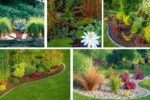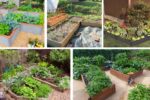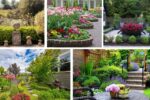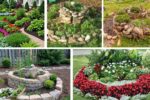Gardens have always been a canvas for creativity, where homeowners and landscapers alike bring together color, form, and texture to create stunning outdoor spaces. Among the many design techniques available, tiered flower beds stand out as both artistic and practical. These layered arrangements don’t just showcase plants at different heights—they add dimension, maximize space, and create breathtaking visual effects that can transform even the simplest yards into vibrant landscapes.
In this article, we’ll explore the charm of tiered flower beds, their practical benefits, design variations, and tips for creating your own layered masterpiece.
Why Choose Tiered Flower Beds?
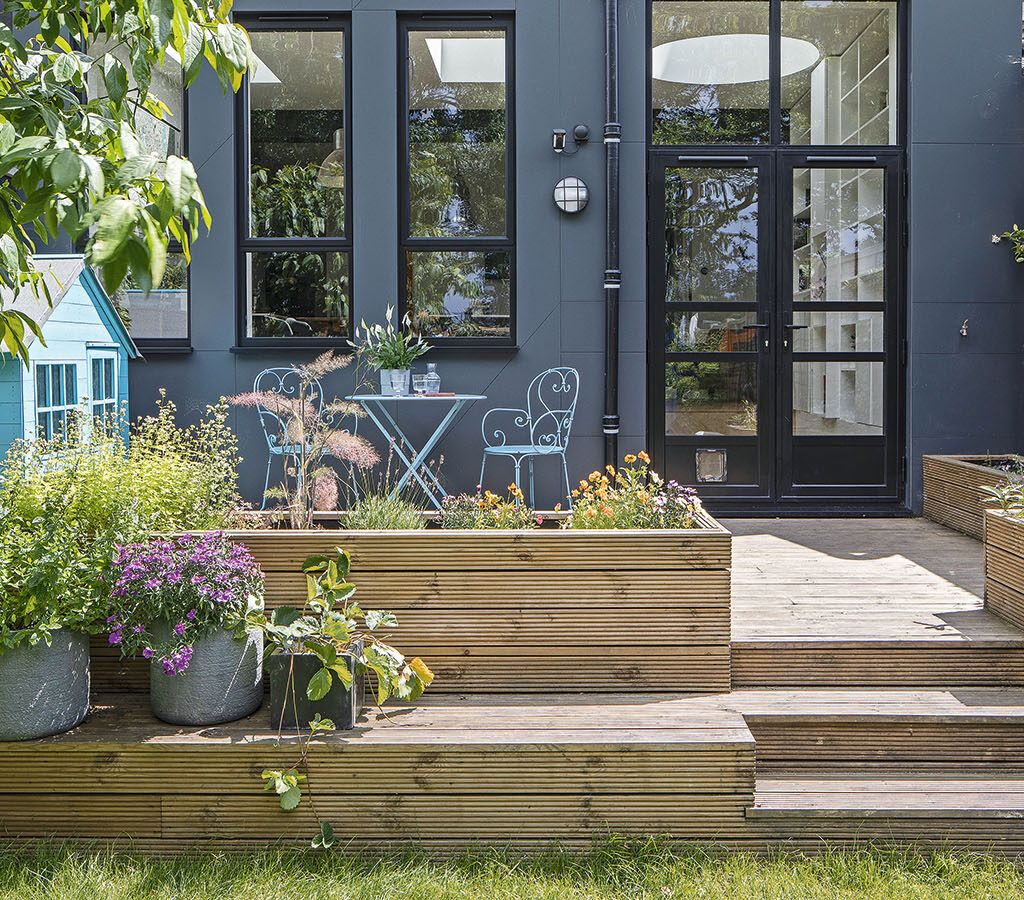
Tiered flower beds are more than just a pretty feature; they bring functionality and structure into a garden. Here are some reasons why they’re such a popular choice:
- Enhanced Depth and Dimension
Instead of having a flat arrangement of flowers, tiered designs add vertical height, making the garden more visually engaging. They draw the eye upward and create a natural sense of flow. - Maximizing Space
For gardeners working with small yards, tiered beds allow the use of vertical space effectively. Even a modest plot can display a wide variety of plants in layers. - Highlighting Focal Points
Tiered beds naturally create focal zones. You can showcase a standout plant or a burst of color in the top tier while letting supportive greenery cascade below. - Improved Plant Growth
With properly designed tiers, each plant receives better access to sunlight, water, and air circulation compared to tightly packed flat beds. - Ease of Maintenance
Raised and tiered beds are easier to weed, prune, and water, reducing strain on the gardener while keeping the garden neat and organized.
Types of Tiered Flower Beds
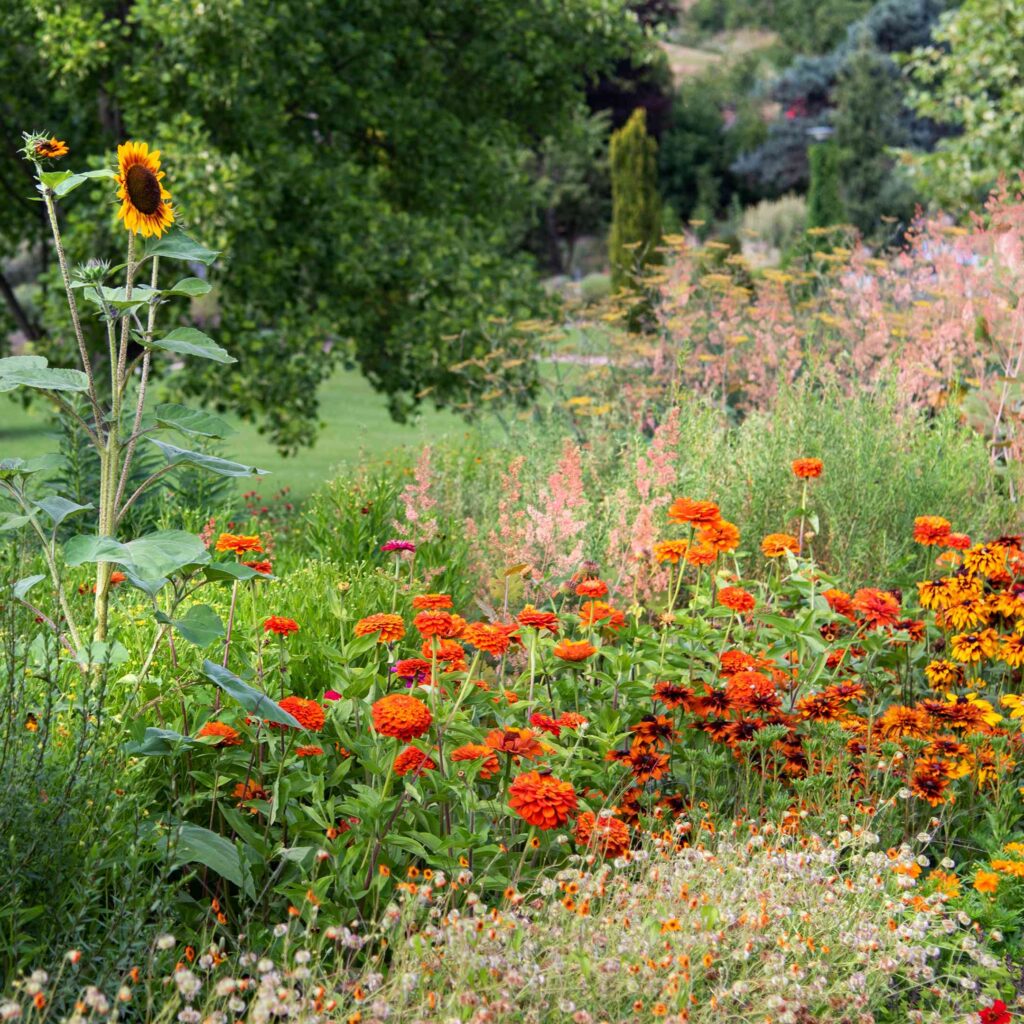
There are multiple ways to design tiered flower beds depending on space, style preferences, and materials available. Below are the most popular approaches:
1. Terraced Garden Beds
Perfect for sloped landscapes, terraced beds use retaining walls or natural stone to create levels on a hill. This design prevents erosion while showcasing flowers in structured layers.
2. Stacked Raised Beds
Made from wood, bricks, or stone, these stacked layers resemble steps. Each level can host different types of plants, creating a mini-garden on every tier.
3. Circular Tiered Beds
Often built with stones or blocks, circular tiered beds resemble wedding cakes. They’re excellent for centerpieces in large lawns, courtyards, or community gardens.
4. Planter-Style Tiered Beds
For smaller spaces, gardeners can use tiered planter boxes. These compact designs are ideal for patios, balconies, or front yards.
5. Natural Rock Tiered Beds
Rocks and boulders can be arranged to create levels in a naturalistic style. These beds blend seamlessly into rustic or woodland-themed gardens.
Best Plants for Tiered Flower Beds
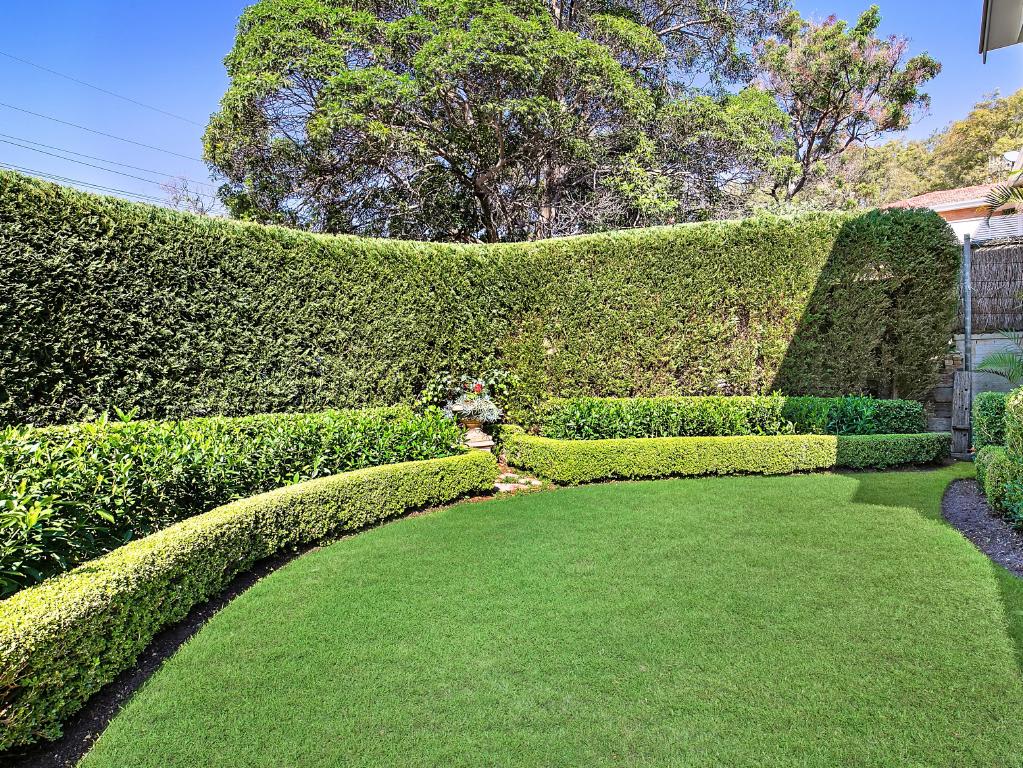
Choosing the right plants is key to creating harmony and visual flow. Each tier can serve a unique purpose depending on height and spread.
- Top Tier (Tall and striking): Ornamental grasses, sunflowers, hollyhocks, or hydrangeas add height and act as anchors.
- Middle Tier (Medium-height flowers): Roses, marigolds, dahlias, or salvia work well here, offering bursts of color.
- Bottom Tier (Trailing and low-spread plants): Petunias, alyssum, creeping thyme, or ivy cascade down, softening the edges of the structure.
Seasonal balance can also be achieved by mixing perennials like lavender or coneflowers with annuals like zinnias or pansies. This ensures color throughout the year.
Design Ideas for Tiered Flower Beds
When designing a tiered flower bed, creativity and balance play an essential role. Here are some inspirational ideas to get started:
- Color-Themed Layers
Assign each tier a specific color scheme—for example, pastels on the top, vibrant reds and yellows in the middle, and whites or soft blues cascading below. - Fragrance-Focused Tiers
Place fragrant flowers like lavender, jasmine, or roses on upper tiers so their scent carries on the breeze. - Edible Flower Beds
Mix ornamental and edible plants. Nasturtiums, calendula, and herbs like basil or thyme not only beautify but also add flavor to your kitchen. - Butterfly and Pollinator Beds
Use bee- and butterfly-friendly plants such as coneflowers, milkweed, and salvia across different tiers to support wildlife. - Seasonal Rotations
Dedicate tiers to different blooming seasons, ensuring that one level is always vibrant while the others transition.
Materials for Building Tiered Flower Beds
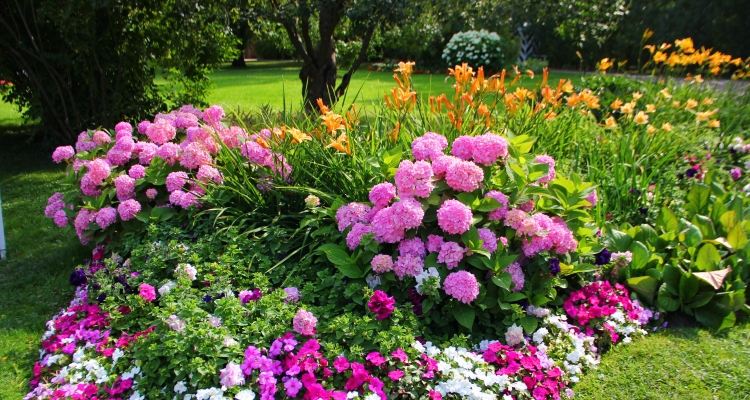
The choice of material shapes the character of your tiered bed. Here are some durable and attractive options:
- Wood: Classic and versatile, though it requires treatment for weather resistance.
- Stone: Natural and timeless, perfect for rustic or formal gardens.
- Bricks: Durable with a neat, structured appearance.
- Metal or Steel Frames: Modern and long-lasting, often used in contemporary gardens.
- Recycled Materials: Old tires, barrels, or reclaimed wood can create eco-friendly and unique tiered beds.
Step-by-Step Guide to Building a Tiered Flower Bed
- Plan the Layout
Sketch the design, considering the number of tiers, size, and location. Ensure it receives adequate sunlight. - Prepare the Base
Level the ground or create retaining walls if working on a slope. Lay a weed barrier if needed. - Build the Structure
Construct the first layer with wood, stone, or bricks. Stack higher levels step by step, ensuring stability. - Add Soil and Compost
Fill each tier with high-quality soil and compost mix. Ensure good drainage for healthy roots. - Plant Strategically
Begin with the top tier, planting taller species first, then move downward with medium and trailing varieties. - Water and Mulch
Water thoroughly after planting and add mulch to retain moisture and suppress weeds.
Maintenance Tips for Tiered Flower Beds
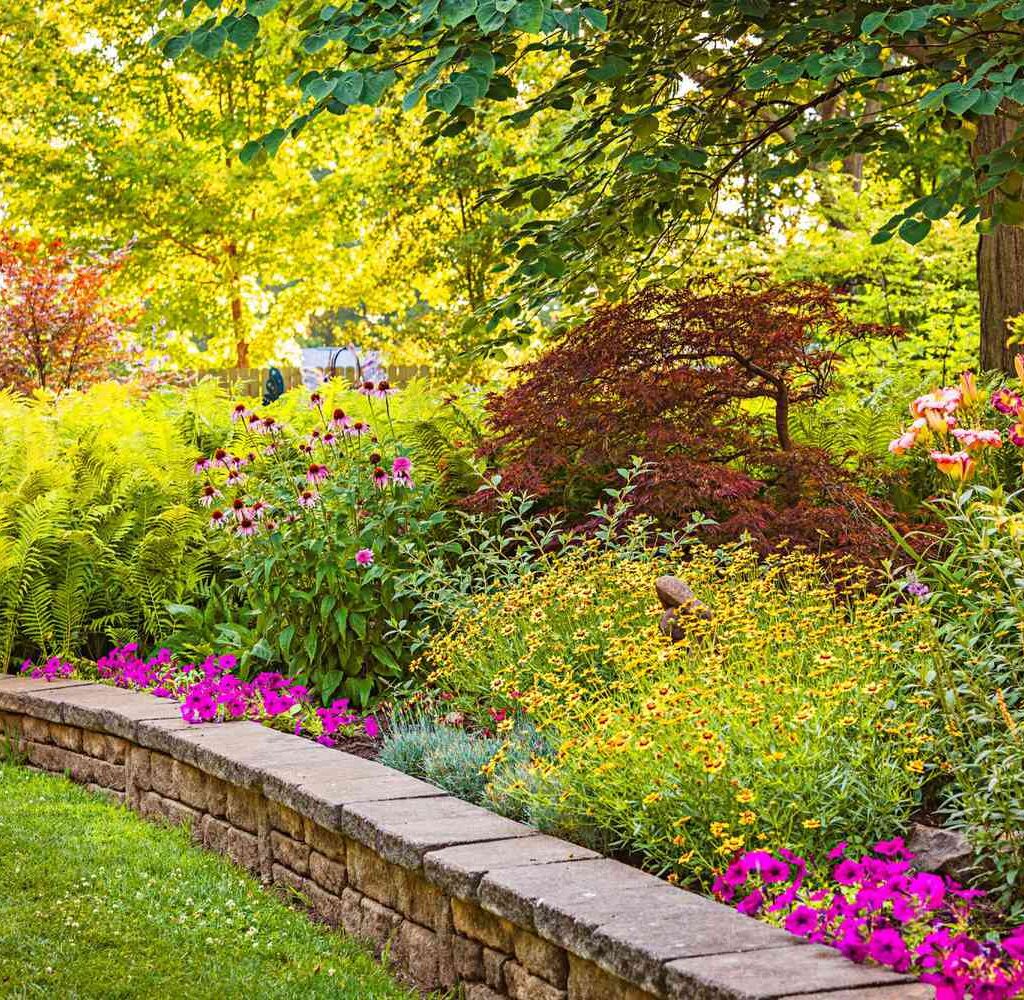
- Regular Watering
Because upper tiers may dry out faster, check soil moisture frequently and install drip irrigation if possible. - Fertilization
Feed the plants with slow-release fertilizer or organic compost seasonally to maintain growth and color. - Pruning and Deadheading
Remove spent flowers to encourage continuous blooming and prevent overcrowding. - Pest Management
Inspect regularly for pests and use natural remedies like neem oil or companion planting to control them. - Seasonal Refreshing
Replace annuals with new seasonal varieties and refresh soil layers every year for sustained fertility.
Conclusion
Tiered flower beds are a garden feature that beautifully merges structure and artistry. They not only add vertical dimension but also transform ordinary outdoor spaces into layered spectacles of color, fragrance, and texture. Whether you’re working with a small backyard, a sloping front yard, or a spacious lawn, tiered beds provide endless opportunities for creativity and personalization.
By carefully selecting plants, designing with themes, and maintaining with care, you can ensure your tiered flower beds remain a year-round source of charm and beauty. In essence, they are more than just garden elements—they are living works of art that celebrate the depth and richness of nature.

